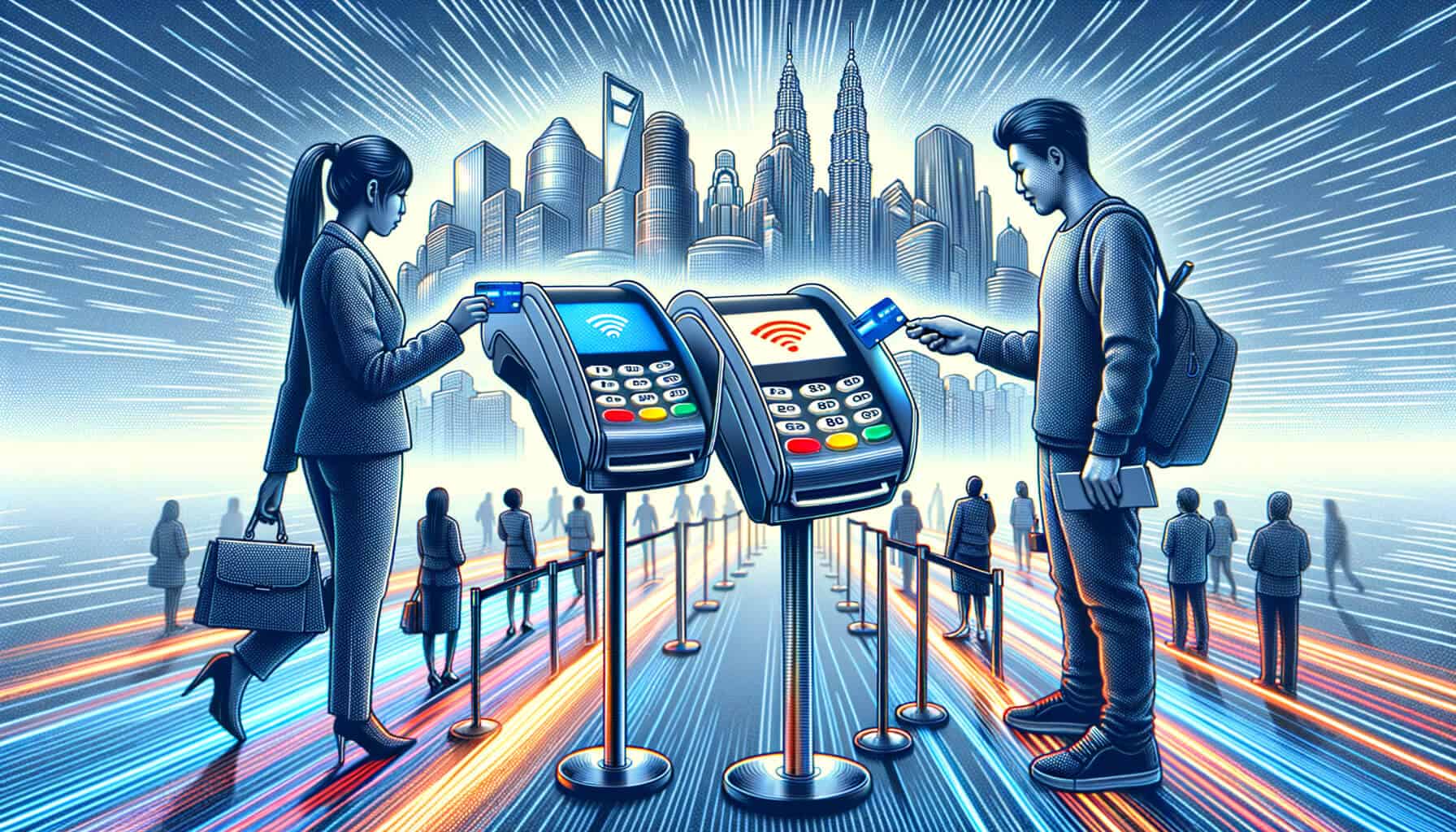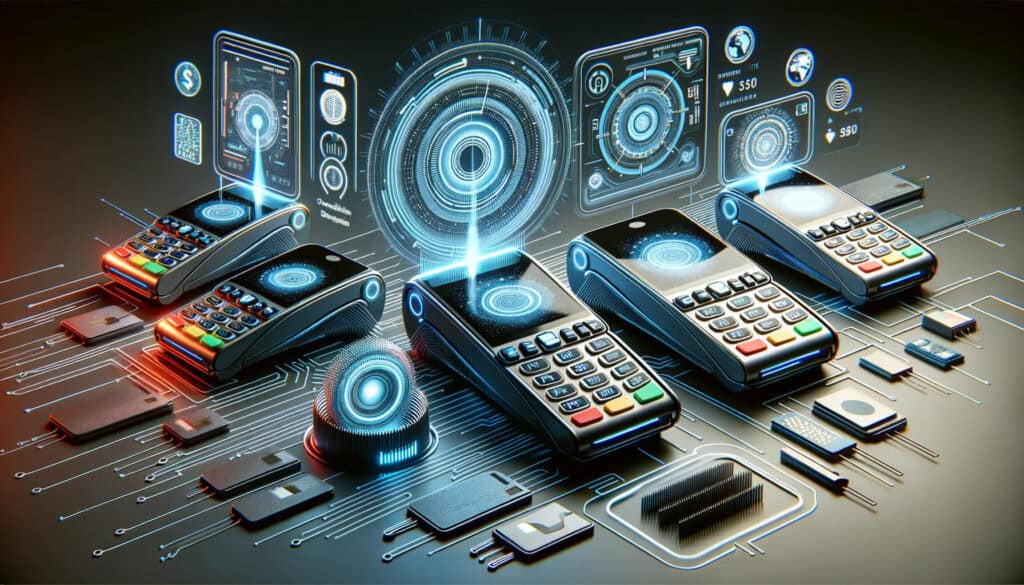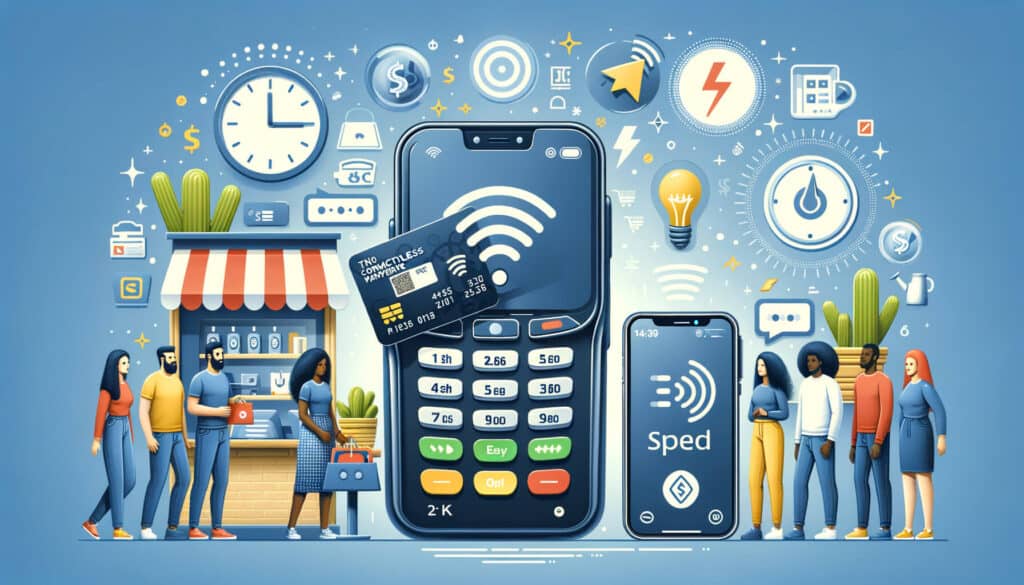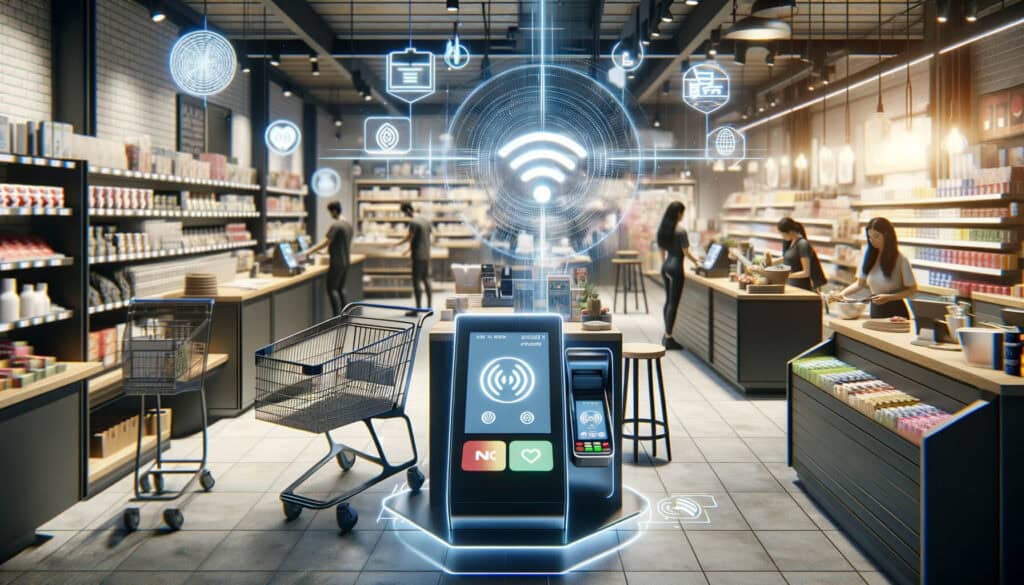
By Amanda Hoglund November 10, 2024
Contactless payment terminals have revolutionized the way we make transactions in today’s fast-paced world. With the advancement of technology, these terminals have become increasingly popular due to their convenience, speed, and enhanced security features. In this article, we will explore the benefits of contactless payment terminals and how they have transformed various industries such as retail, small businesses, hospitality, and transportation.
How Contactless Payment Terminals Work
Contactless payment terminals utilize near field communication (NFC) technology to enable quick and secure transactions. NFC allows two devices, such as a contactless card or a mobile phone, to communicate with each other when they are in close proximity. When a customer taps their contactless card or mobile phone on the payment terminal, the terminal reads the information stored on the card or phone and processes the payment.
These terminals are equipped with an antenna that emits radio waves, which are received by the contactless card or mobile phone. The card or phone then sends back the necessary information, such as the cardholder’s account details, to complete the transaction. This entire process takes only a few seconds, making contactless payments significantly faster than traditional payment methods.
Enhanced Security Features of Contactless Payment Terminals

One of the major advantages of contactless payment terminals is the enhanced security they offer. These terminals use advanced encryption technology to protect sensitive customer information during the transaction process. The data transmitted between the terminal and the card or phone is encrypted, making it extremely difficult for hackers to intercept and misuse the information.
Additionally, contactless payment terminals have built-in security measures to prevent fraudulent transactions. For example, they often require the card or phone to be held within a certain distance from the terminal for the transaction to be processed. This ensures that the payment can only be made when the customer is physically present, reducing the risk of unauthorized transactions.
Furthermore, contactless payment terminals do not store any customer data on the terminal itself. Instead, the information is securely transmitted to the payment processor or the card issuer for verification and processing. This eliminates the risk of data breaches or theft from the terminal, providing customers with peace of mind when making contactless payments.
Convenience and Speed of Contactless Payments

Contactless payments offer unparalleled convenience and speed, making them a preferred choice for both customers and businesses. With a simple tap of a card or mobile phone, customers can complete transactions within seconds, eliminating the need for cash or entering a PIN. This not only saves time for customers but also reduces queues and waiting times at checkout counters, leading to improved customer satisfaction.
Moreover, contactless payments are extremely convenient for customers who are on the go or have limited time. Whether it’s buying a coffee, groceries, or even paying for public transportation, contactless payments allow customers to make quick and hassle-free transactions without the need to carry cash or search for loose change.
Contactless Payment Terminals and the Retail Industry

The retail industry has greatly benefited from the adoption of contactless payment terminals. With the rise of e-commerce and online shopping, retailers have had to adapt to changing consumer preferences and provide a seamless shopping experience. Contactless payments have become an integral part of this experience, allowing customers to make purchases in-store quickly and securely.
Contactless payment terminals enable retailers to offer a variety of payment options to their customers, catering to their preferences and increasing customer satisfaction. By accepting contactless payments, retailers can attract a wider customer base, including tech-savvy millennials who prefer the convenience of mobile payments.
Furthermore, contactless payments provide valuable insights to retailers through transaction data. This data can be analyzed to understand customer behavior, preferences, and trends, enabling retailers to make informed business decisions and personalize their offerings. For example, retailers can use this data to create targeted marketing campaigns or optimize their inventory management.
Benefits of Contactless Payment Terminals for Small Businesses
Small businesses can greatly benefit from the adoption of contactless payment terminals. These terminals level the playing field for small businesses by providing them with the same payment options as larger retailers. By accepting contactless payments, small businesses can enhance their customer experience and compete with larger competitors.
Contactless payments also offer cost-saving benefits for small businesses. With traditional payment methods, businesses often incur costs associated with handling cash, such as counting, storing, and transporting it to the bank. By encouraging customers to use contactless payments, small businesses can reduce these costs and streamline their operations.
Moreover, contactless payment terminals enable small businesses to track and manage their transactions more efficiently. The data collected from these terminals can be integrated into accounting software, making it easier for businesses to reconcile their sales and monitor their cash flow. This automation saves time and reduces the risk of human error in manual data entry.
Contactless Payment Terminals and the Hospitality Industry
The hospitality industry, including restaurants, hotels, and cafes, has embraced contactless payment terminals to enhance the customer experience and streamline operations. Contactless payments offer a seamless and efficient way for customers to settle their bills, reducing waiting times and improving overall satisfaction.
In the restaurant industry, contactless payment terminals enable customers to split bills easily, pay at the table, and even leave tips digitally. This eliminates the need for manual calculations and reduces the risk of errors. Additionally, contactless payments provide a more hygienic option, especially in the current global pandemic, as customers do not need to handle cash or exchange cards with servers.
Hotels and resorts have also adopted contactless payment terminals to provide a frictionless experience for their guests. From check-in to check-out, guests can use contactless payments for room charges, dining, and other services within the hotel. This not only enhances convenience but also improves the overall guest experience, leading to higher customer satisfaction and loyalty.
Contactless Payment Terminals and the Transportation Sector
The transportation sector, including public transportation systems and ride-sharing services, has witnessed a significant transformation with the adoption of contactless payment terminals. These terminals have revolutionized the way people pay for their fares, making it more convenient and efficient.
In public transportation systems, contactless payment terminals allow passengers to simply tap their contactless cards or mobile phones to pay for their fares. This eliminates the need for physical tickets or smart cards, reducing the cost and complexity of managing ticketing systems. Additionally, contactless payments enable seamless transfers between different modes of transportation, providing a more integrated and user-friendly experience for passengers.
Ride-sharing services have also embraced contactless payments as a preferred method of payment. By integrating contactless payment terminals into their apps, ride-sharing companies can offer a seamless and cashless experience for their customers. This not only improves convenience but also enhances safety, as drivers do not need to handle cash or exchange cards with passengers.
FAQs
Q1. Are contactless payments secure?
Yes, contactless payments are secure. Contactless payment terminals use advanced encryption technology to protect sensitive customer information during transactions. The data transmitted between the terminal and the card or phone is encrypted, making it difficult for hackers to intercept and misuse the information.
Q2. Can I use my mobile phone for contactless payments?
Yes, you can use your mobile phone for contactless payments. Many smartphones are equipped with NFC technology, allowing you to make payments by simply tapping your phone on a contactless payment terminal. You can add your payment card details to your phone’s digital wallet and use it for contactless payments.
Q3. What is the transaction limit for contactless payments?
The transaction limit for contactless payments varies depending on the country and the payment card issuer. In many countries, the transaction limit for contactless payments is set at a certain amount, typically around $100. However, some countries and card issuers have increased the limit to encourage contactless payments during the global pandemic.
Q4. Can I use contactless payments abroad?
Yes, you can use contactless payments abroad. Contactless payments are widely accepted in many countries around the world. However, it is advisable to check with your card issuer or bank to ensure that your card is enabled for international use and to inquire about any additional fees or restrictions that may apply.
Q5. What happens if my contactless card is lost or stolen?
If your contactless card is lost or stolen, you should immediately contact your card issuer or bank to report the loss. They will block the card to prevent any unauthorized transactions. Most card issuers offer fraud protection and will reimburse you for any fraudulent transactions made on your lost or stolen card.
Conclusion
Contactless payment terminals have revolutionized the way we make transactions, offering convenience, speed, and enhanced security features. These terminals have transformed various industries, including retail, small businesses, hospitality, and transportation. With their advanced encryption technology, contactless payment terminals provide secure transactions, protecting sensitive customer information. The convenience and speed of contactless payments have improved customer satisfaction and reduced waiting times.
Small businesses have benefited from the adoption of contactless payment terminals, leveling the playing field and reducing costs. In the hospitality industry, contactless payments have streamlined operations and enhanced the guest experience. The transportation sector has witnessed a significant transformation with the adoption of contactless payment terminals, providing a seamless and efficient way for passengers to pay for their fares. Overall, contactless payment terminals have become an integral part of our daily lives, offering a convenient and secure payment option.